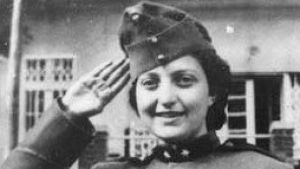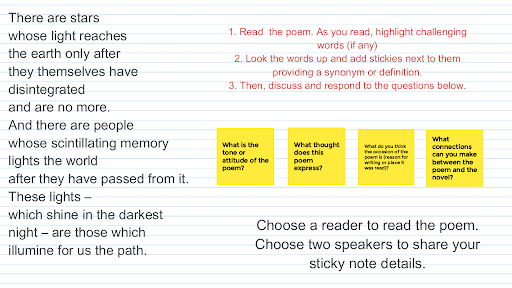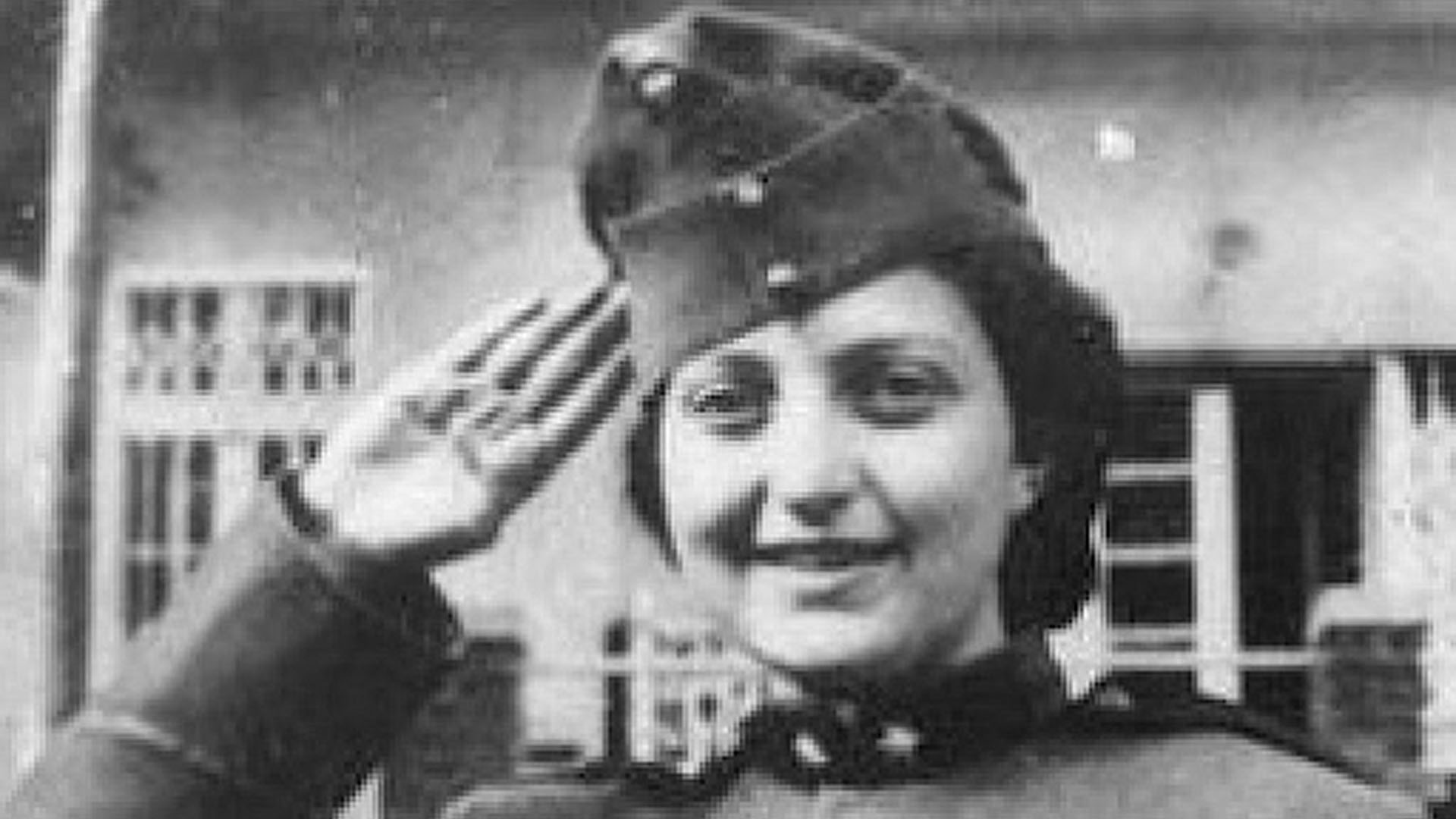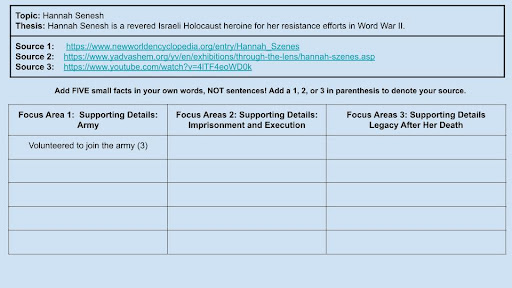Addressing Multiple Standards in Thematic Units
For most of my 8th grade students, the general idea of dissecting poetry is about as appealing as a papercut. To combat that sentiment, I avoid the dreaded stand alone poetry unit, and embed poetry within each thematic unit throughout the year. When students read a narrative poem version of “Frankenstein”, they are able to recognize common themes throughout the horror genre. Being familiar with the thematic context gives the students a boost of confidence when analyzing poems. It is also a helpful and effective way to address Indiana Academic Standard 8.RL.3.1, Compare and contrast the structure of two or more related works of literature (e.g., similar topic or theme), and analyze and evaluate how the differing structure of each text contributes to its meaning and style. The specific poems and research task ideas within this blog were designed as a related reading component within a novel study over The Hunger Games. The poetry analysis tasks specifically address Indiana Academic Standards 8.RL.1, 8.RL.2.1, 8.RL.2. 2, 8.RL.3.1. The research tasks are a time-effective way to get meaningful practice with many elements of research process standards and non-fiction reading (8.W.5., 8.RN.2.1) within a novel unit. The poems specifically are most appropriate for grades 7-10, but the Eduprotocols Mini-Report lesson frame could be modified for nearly any grade level or content area.
The Poet

I first learned about Hannah Senesh’s poetry and legacy at a book reading for Margaret McMullen’s Where the Angels Lived at Temple Adath B’Nai Israel in Evansville, Indiana. The poem “There Are Stars” was shared with the audience. This poem is about how some souls and some lives continue to shine on long after they have left this Earth. It is quite appropo for Hannah’s own life and legacy. Hannah Senesh was a young Jewish woman, living in Palestine during World War II. She had emigrated from Hungary at the age of 17. In 1943-1944, she served as a paratrooper in a special Jewish commando unit of 32 volunteers organized by the British Army. This unit would parachute behind enemy lines on a secret mission to help rescue Allied forces and Hungarian Jews en route to death camps. Unfortunately, Hannah was captured by Hungarian authorities, charged with treason, and imprisoned for five months. She was interrogated and tortured, but never gave in to the demands of her captors. She was executed on November 7, 1944 at the age of 23. Hannah wrote poetry before her time in the Army, and continued this practice during her missions and during her imprisonment. “To Die” was written while she was still in Israel, a testament to her patriotism. “Blessed Is The Match” was written shortly before Senesh crossed the border into Hungary. She gave it to one of her comrades in the event she did not survive the mission. The poem “One, Two, Three” was found on her cell walls after her execution.
Being familiar with the thematic context gives the students a boost of confidence when analyzing poems.
Part One – Four Poem Analysis Activity
I like to do a “blind” reading of four of her poems with my students. I do not give them any context, even the fact that they were all written by the same author. I number off the students 1-4, or assign a certain poem per row. Then, in small groups, they read, discuss, and analyze one of the four poems. Then, they read their poem and insights to their entire class. We read and analyze these poems during a novel study of The Hunger Games, so there is a question that asks about making connections to the novel, which could be removed or modified. The ideas expressed in the poem are common to the topics of dystopian fiction, heroism, war, and taking a stand. Click here to view a copy of the Jamboard. Click here to create your own copy. This jam has instructions and questions for four different poems: “There Are Stars”, “To Die”, “One, Two, Three”, and “Blessed Is the Match”.

I prefer the Jamboard version, but I have a slightly modified Google Doc version as well. Hard copies work just as well, too!
After all the groups have read their poems and presented their findings, I do reveal that all four poems were written by the same author, who is also the speaker of several of the poems. Then, we further discuss questions as a whole group such as:
- Who do we think this speaker/author is? What is their identity (age, gender, job, social class, etc.)?
- What is the catalyst for writing these poems? What was going on in the writer’s life?
Most of the time, the students assume this is some sort of soldier, but typically hypothesize this person to be male and much older. At that point, I reveal the writer was actually a female paratrooper during the Holocaust! I also reveal the poem “One, Two, Three” was found within her jail cell. I TRY really hard not to reveal much more than that, as the next activity has them researching Hannah’s story and legacy, which at this point, they are very interested in learning more about.
Part Two – Compiling Research to Support a Claim
The second activity uses the Eduprotcols “Mini-Report” lesson frame to guide research on Hannah to support the following thesis: Hannah Senesh is a revered Israeli Holocaust heroine for her resistance efforts in Word War II.
I love the idea of the “Mini-Report” because it is a simple, yet effective way to provide frequent practice for many critical essay writing skills such as summarizing, selecting relevant details, organizing information, and incorporating evidence from multiple sources. This also provides continued exposure to non-fiction texts, even within a novel unit. With this “lesson frame”, the teacher provides students with an overall topic, thesis, and other focus areas to support that thesis. The teacher also provides the sources where students will find their evidence. Think of it as a turbo-charged graphic organizer. The teacher can modify the number of sources or focus areas. In this example, I’ve chosen two texts and one video. The number and style of sources can always be modified, but it’s beneficial to have more than one. The “Mini-Report” lesson frame can be modified endlessly and used over and over again in Science, Social Studies, and Language Arts to build student confidence and competence with these skill-sets. So, when the time comes to write essays to support a claim with multiple sources, students have had meaningful, ongoing practice with the basics. The writing part, though? It’s completely optional. Getting frequent practice with writing-related skills still improves student writing! A writing extension of this activity would still be a logical next step, of course. This specific “Mini-Report” could even be jigsawed, with students being assigned one of three supporting ideas to research and write one body paragraph over. Then, groups of three could be created to put the puzzle pieces of a full essay together. In my own building, Language Arts teachers recently provided Professional Development for our colleagues in other content areas on how they can best support ELA teachers within their own classrooms. The Mini-Report lesson frame was one thing that I shared with my school because not only would it benefit my instruction and my students, but because it would benefit my colleagues as well, since the skills of this task address many of the This is such an easy to implement tool to get students thinking and reading critically in all content areas, but it is approachable for those outside of the ELA classroom. If there is a potential thesis statement to be proven, whether it’s the significance of a moment in history or the human impact on the environment, this lesson frame can be used. Here is a generic template I created that includes guidance for teachers. Share with your colleagues to get them started!
Resources
Please login or register to claim PGPs.
Alternatively, you may use the PGP Request Form if you prefer to not register an account.




